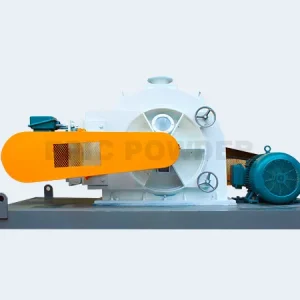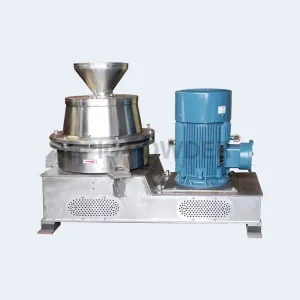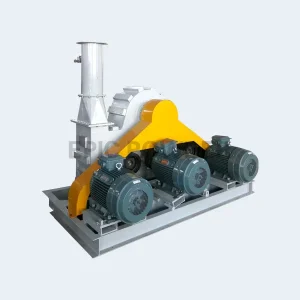Calcium carbonate powder is a commonly used inorganic filler, which is widely used in plastics, coatings, rubber and other fields. However, calcium carbonate powder does not fully meet the requirements for use in some aspects, such as poor fluidity, low dispersibility, poor weather resistance and other problems. In order to overcome these defects, the method of coating modification can be used to deal with them. This paper will introduce the role of calcium carbonate powder coating modification and related modifier types, advantages and disadvantages.
I. The role of calcium carbonate powder coating modification
Improving mobility and decentralization
Calcium carbonate powder coating modification can make its surface smooth and uniform, reduce the friction between particles, and improve the fluidity and dispersion of the powder. This facilitates the improvement of fluidity, mixing and stability during processing, and also reduces the generation of air bubbles and shrinkage holes in the product.
Enhanced weathering and mechanical properties
Calcium carbonate powder cladding modification can also enhance its weather resistance and mechanical properties. By adjusting the thickness and composition of the coating layer, the water absorption and chemical reactivity of the powder surface can be reduced, and its weather resistance can be increased. At the same time, the coating layer can also improve the hardness, strength and abrasion resistance of calcium carbonate powder.
Increased efficiency of utilization
Calcium carbonate powder coating modification can improve the adhesion and compatibility between it and the matrix material, thus reducing filler loss and waste and improving the use efficiency. In addition, the presence of the coating layer can also reduce the dust pollution and the difficulty of manual operation of the powder in the production process.
the method of calcium carbonate powder coating modification
Surface coating method
Surface coating method is one of the most commonly used coating modification methods for calcium carbonate powder, which forms an organic or inorganic coating layer on the surface of calcium carbonate powder by coating or impregnation. This method has the advantages of simplicity, easy operation and low cost, but sometimes there is particle aggregation phenomenon, which affects the dispersibility.
Vapor phase deposition
Vapor phase deposition is a newer method of coating modification of calcium carbonate powder, which forms a uniform coating layer on the surface of calcium carbonate powder by evaporating the organic substances and then allowing the organic substances in the vapor phase to be deposited on the surface of the calcium carbonate powder. This method can prepare a thin, dense coating layer without affecting the particle size and shape. However, the equipment and operating conditions of the vapor phase deposition method are more complicated and the cost is relatively high.
sol-gel method
Sol-gel method is a method to form a coating layer on the surface of calcium carbonate powder by hydrolyzing and gelation of inorganic compounds. This method can prepare a thick and dense coating layer, and at the same time, certain functional compounds, such as fire retardant and ultraviolet absorber, can be added to improve the added value of the product. However, the sol-gel method requires multiple steps, is difficult to operate, and has a relatively high production cost.
Types of modifiers and advantages and disadvantages of calcium carbonate powder coating modification
Silicone Modifiers
Organosilicon modifier is a widely used modifier in the coating modification of calcium carbonate powders with excellent weathering and abrasion resistance. At the same time, silicone molecules can also form a dense protective layer on the surface of the powder, improving its ink printability and material flow and other characteristics. However, the price of organosilicon modifiers is relatively high.
Fatty acid modifiers
Fatty acid modifier is a commonly used inorganic filler surfactant that reduces the water absorption and chemical reactivity on the surface of calcium carbonate powder and improves its moisture resistance and stability. In addition, fatty acids can also increase the compatibility and adhesion between calcium carbonate powder and matrix materials such as resins. However, fatty acid modifiers have poor stability for high temperature conditions and are prone to decomposition.
Resin Modifiers
Resin modifiers are a method of forming a coating layer by reacting a resin with the surface of calcium carbonate powder. This method can improve the hardness, strength, and abrasion resistance of the calcium carbonate powder, and can substantially improve the adhesion and compatibility between it and the substrate material. However, the resin modifier production process is complicated and the cost is high.
Metal salt modifier
Metal salt modifier is a kind of modifier that utilizes metal ions to treat calcium carbonate powder. Metal ions have good oxidation resistance and stability, and can improve the weather resistance and UV protection of calcium carbonate powder. However, because the metal salt modifier will release a large number of metal ions, there are some problems in environmental protection.
In summary, there are many different methods and modifiers for calcium carbonate powder coating modification, and each method and modifier has its own advantages and disadvantages in application. In the future, with the continuous expansion of the application fields of calcium carbonate powder and the continuous change of market demand, we need to further optimize the modification methods and select more suitable modifiers, so as to achieve the optimal application of calcium carbonate powder in various fields.



